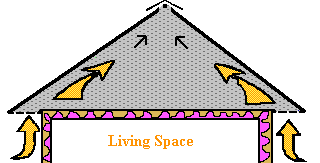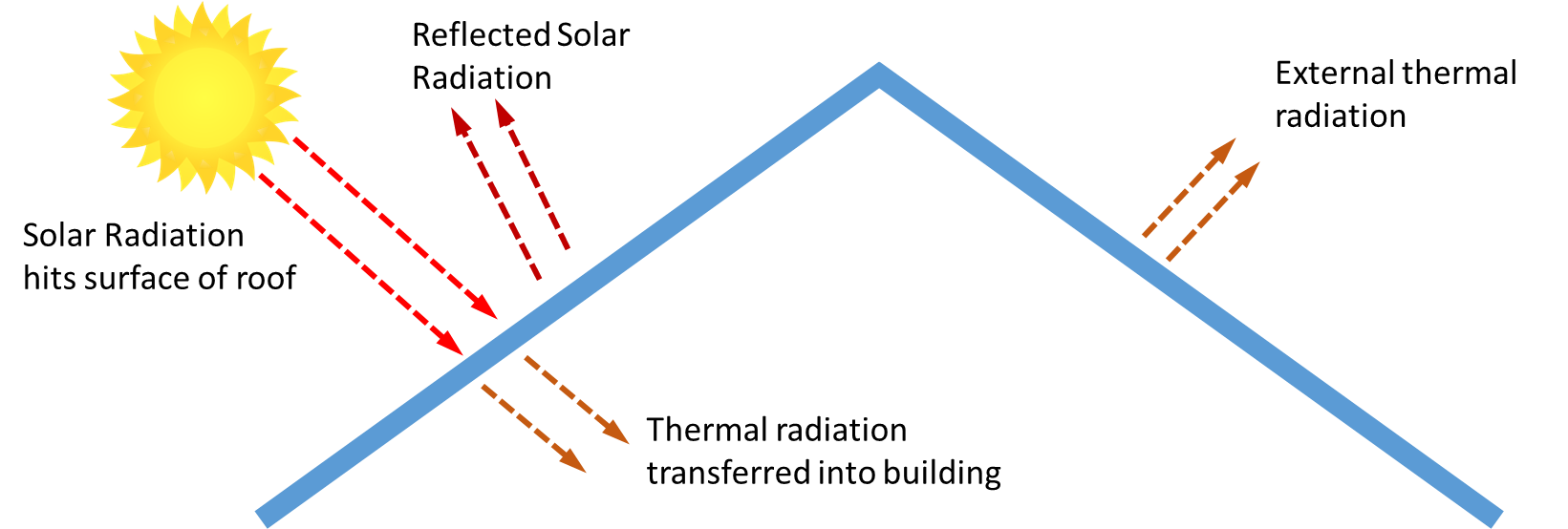Heat Adaptation and Mitigation for Homeowners
Excessive heat can make your home a miserable and dangerous place to be. Intense solar exposure can harm your home as well, causing damage to wood, paint, roofing, carpets, and furniture. In many parts of the country, Americans are experiencing more frequent and extreme heat events.
Protecting our homes’ inhabitants from the effects of severe heat is the most important goal of adaptation efforts. Unlike other types of weather damage, extreme heat does not cause sudden, dramatic harm to your home. However, heat can cause significant damage to the outside structure of housing. Paint can bubble and chip, wood siding can shrink and crack, roofs can take a beating, and foundations can shift.
Heat and humidity combined can challenge the integrity of the structure of your home and cause mold, mildew, and termite issues. This happens when there is stagnant air in the crawl space or moisture coming into bathrooms, attics, door and window frames, and plumbing.
Homeowners’ insurance will cover damage to your heating, ventilation and air conditioning (HVAC) systems if they are damaged by fire, falling trees, vandalism, lightning strikes and other “covered perils”. However, normal wear and tear on cooling systems is not insured. Neither is most heat-related home damage unless the damage is connected to humidity issues.
Your Action Plan for Extreme Heat
Heat Illness Awareness
Excessive heat can be very dangerous for your health and your family. In fact, extreme heat kills more people annually than any other type of weather disaster. Heat illness is what happens when your body is unable to dissipate heat effectively. In more severe cases, the equilibrium of salt and water within your body becomes unbalanced and therefore sweating fails to keep you cool when your body temperature rises dangerously.
Those most at risk are older adults, infants, young children, people with chronic illnesses or physical disability, and people living alone. Heat illness is most present during times when temperatures go above what an area typically experiences and are sustained for several days.
To help protect yourself and your community, learn the signs of severe heat illness (heat stroke): body temperature above 103 degrees F, hot and dry skin without signs of sweat, strong and rapid pulse, and dizziness, confusion, or unconsciousness. Also be aware of how high humidity can increase the risks of extreme heat, and pay attention to wet-bulb temperatures if humidity is high.
There are four heat illnesses. From least to most serious they are:
- Heat Rash: Blocked pores trap perspiration under your skin and cause red blisters or sores. Least serious form of heat illness which usually, but not always, affects babies.

- Heat Cramps: Muscle cramps or spasms that occur after exercising or sweating in high heat conditions.
- Heat Exhaustion: Caused by a loss of water and salt in the body. With unbalanced salinity levels, your body is unable to produce the sweat necessary to cool your body correctly.
- Heat Stroke: The body’s heat regulation system is overwhelmed and unable to produce sweat. Most severe form of heat illness; requires emergency medical care.
If you experience these symptoms, do not rely on fans as your primary source of cooling. Fans circulate air but do not reduce body temperature except through evaporation of sweat. If the temperature is above body temperature, it can actually cause more harm. To prevent heat illness, reduce your risks from rising temperatures with simple improvements that help keep your house cool on hot days.
Mitigating Heat Risks
From small to large changes, mitigation starts with knowledge about how your home is impacted by extreme heat. Obtaining your ClimateCheck property report is a great way of assessing your present and future risk. Other great options are to look for local government resources and hire a private inspector to evaluate your home’s capacity to withstand extreme heat and other related hazards like drought and flooding.
With knowledge of where your home is susceptible to extreme temperatures, apply the following mitigation options where necessary:
Inside Your Home
- Install air conditioning.
- Install drapes or shades on every window and door to provide insulation and block the sun. Another option is to install window tinting or use low-emissivity coating to reduce solar gains.

- Add heat control window film to reflect the sun without blocking your view.
- Install weather-stripping on doors, windows, and the often overlooked window air conditioning units to block any air gaps.
- Insulate your home between your walls, floors and ceilings. Adding insulation is expensive, but makes a significant difference in reducing your energy costs. Older and thinner insulation is nearly ineffective for heat protection and containing cool air produced by your cooling systems.
- Consider upgrading to insulated double-pane windows.
- Set up your appliances for warm summer weather. Check your refrigerator temperature and make sure it has adequate ventilation space and clean dust from cooling coils to prevent appliance overheating. Turn down the operating temperature of your water heater to 120 degrees F.
- If you have preexisting conditions or limited mobility that would make you vulnerable due to lack of air conditioning during a power outage, consider installing a backup generator. Severe summer storms can often knock out power and be followed by extreme heat.
Inside your Attic and Crawl Space
- Insulate your attic and attic door or entryway. Blown-in loose attic insulation is one of the highest returns on investment of all home improvement projects, thanks to its low material and installation cost. You will also want to insulate around where you access the attic space.
- Allow heat to escape and reduce your air conditioning costs by installing a continuous venting system throughout the attic to property ventilate the eaves of the roof vents. Another option is to install a whole-house attic fan.

- Encapsulate your crawl space to prevent the issue of heat and humidity induced mold and mildew damage. Encapsulation is a complete covering of the foundation and the ground beneath it that prevents moisture from coming up from the ground.
Outside Your Home
- If you notice your paint bubbling or chipping in extreme heat, use elastomeric paint to create a barrier against moisture and avoid mold issues. Similarly, apply a protective coating product to sun-exposed wood.
- Coat and seal your roof against UV rays and install vapor barriers to prevent expansion, warping, cracked shingles, and dried out caulk.
- Create shade by adding trees and awnings. Shade your home along the southern exposure, where most sunlight occurs during the day, for maximum impact. Deciduous trees are a great option because they provide cover when needed in warm months but allow sun exposure in cooler times when they shed their leaves. If you have high fire 1 risk, do this carefully. Also plant trees with enough distance to avoid foundation damage due to roots.
- Reduce heat absorption from the sun by using light-colored roof and wall colors. Reflective roofing materials, called “cool roofs”, are particularly helpful to prevent the transfer of the sun’s heat into your home.

For tips on protecting your foundation, see our drought adaptation and mitigation guide.
Passive Cooling
A good interior and exterior house layout can assist with passive heating and cooling and lighting interior spaces efficiently. Passive cooling uses the design of the house to prevent high temperatures without air conditioning or other mechanical assistance.
- Use shade to keep heat out. Options for providing cover include eaves, awnings, covered balconies, pergolas, and plants. This technique is most effective when you track the path of the sun over your property throughout the year. You will want to effectively shade the high-angle summer sun from the south but let in winter light.
- Minimize window or wall area oriented east or west. East or west-facing windows should be limited in size and should be protected by shade coverings.
- Use breeze and air movement inside your home to keep yourself cool. Orient your home towards the prevailing breeze or use other features to direct fresh air throughout your home.
- A minimum 25 per cent cover by vegetation should be maintained on the property excluding the roof area.
In addition to the design of your home, your surroundings can either decrease or amplify your heat risk. Densely built city areas with little green cover are prone to the “Urban Heat Island” effect where pavement, buildings, and other surfaces trap and retain heat. If you have the choice, purchase or build housing in areas with open spaces and vegetated shoulders.
Conclusion
For homeowners, preparing for extreme heat helps maintain the value of your investment and provide comfort to those living inside. Carefully preparing for heat illness and mitigating the sun’s access to your home can help you and your family avoid the risks of extreme heat. As a backup plan, identify a designated cooling center or places with publicly available cooling such as a library or shopping mall.
With these steps in place, learn to protect your home from other types of extreme climate risk.